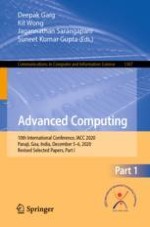2021 | OriginalPaper | Chapter
Intuitive Feature Engineering and Machine Learning Performance Improvement in the Banking Domain
Authors : S. Teja, B. Chandrashekhar, Eswar Reddy, Hrishikesh Jha, K. Nageswara, Mathew Joseph, Jaideep Matto, Richard K. Bururu
Published in: Advanced Computing
Publisher: Springer Singapore
Activate our intelligent search to find suitable subject content or patents.
Select sections of text to find matching patents with Artificial Intelligence. powered by
Select sections of text to find additional relevant content using AI-assisted search. powered by
